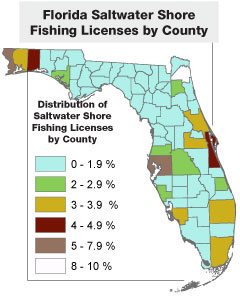 |
||||||||

Pet Waste Campaign Expands To Pinellas
 “Pooches for the Planet,” the educational campaign created by the Tampa Bay Estuary Program, is expanding to animal shelters, pet businesses and neighborhoods in Pinellas County, thanks to funding support from the Southwest Florida Water Management District’s Pinellas-Anclote Basin Board.
“Pooches for the Planet,” the educational campaign created by the Tampa Bay Estuary Program, is expanding to animal shelters, pet businesses and neighborhoods in Pinellas County, thanks to funding support from the Southwest Florida Water Management District’s Pinellas-Anclote Basin Board.
From November through January, anyone adopting a dog from the Pinellas County Animal Shelter in Largo or the Humane Society of Pinellas shelter in Clearwater will receive a “Pooches for the Planet” adoption kit filled with valuable information and free goodies.
At the same time, TBEP is working with local pet-related businesses and veterinary clinics to increase awareness of the importance of picking up and properly disposing of pet waste. Posters, rack cards, postcards and stickers are available to any business who agrees to display or distribute them.
TBEP also is working with the city of St. Petersburg and Pinellas County to recruit civic associations willing to take part in a year-long pilot pet waste education program. The neighborhoods will receive pet waste stations and a year’s supply of bags if they agree to restock the station regularly, distribute informational doorhangers, and perform poop surveys using handheld GPS units (also provided). Interested? Contact nanette@tbep.org.
Thermal Imaging Helps Track Everglades Pythons
Two days of intense testing, study and discussion led by the US Army Corps of Engineers indicate that thermal imagery is a promising technology for locating the invasive Burmese python. "We determined that thermal images may be very successful at certain seasons and certain times of day for finding pythons," said USCOE’s Larry Wright.
Used extensively for military and security purposes, thermal imaging makes it possible to “see” animals and people not visible to the human eye. Tests performed at different times of day show that snakes could be seen in the heat of the day but were much more visible when the sun is low in the sky and temperatures had dropped. Experts are predicting that the technology will be most effective in January because of the angle of the sun.
There may be as many as 100,000 pythons thriving in the Everglades and experts believe the population may be moving north. They lay an average of 50 eggs per clutch and are about 20 inches long at birth, so they are more likely to survive than most indigenous species. Stomach examinations of pythons have revealed they are eating rabbits, mice and rats along with many native bird species including limpkins, egrets and herons.
Further testing of the imaging technology is planned, but methodologies for controlling the snakes are still to be determined. “Before we can control the snakes, we must detect them,” Wright said. “We did not discuss control methods at this meeting."
Discover Egmont Key
 Egmont Key, the historic island guarding the entrance to Tampa Bay, has endured the Civil War, multiple Seminole wars, the Spanish-American War and, most recently, the budget cut wars in Tallahassee that threatened to leave the island vulnerable to vandals.
Egmont Key, the historic island guarding the entrance to Tampa Bay, has endured the Civil War, multiple Seminole wars, the Spanish-American War and, most recently, the budget cut wars in Tallahassee that threatened to leave the island vulnerable to vandals.
Join Egmont Key Alliance volunteers on Nov. 14 and 15 for the 12th annual Discover Egmont Key and learn more about this hidden treasure. Accessible only by boat, the island features an historic lighthouse and ruins from historic Fort Dade. It’s also one of the region’s premier wildlife viewing areas with gopher tortoises, shorebirds and the occasional migrating hummingbird, plus white sand beaches.
During the annual event, volunteers man interpretive sites on island history, wildlife, military history and nature and re-enact the Civil War.
Shuttle boats leave Fort DeSoto Park from 9:00am until 2:00pm; with the last boat returning from Egmont at 4:30pm. Hot dogs, water and souvenirs will be available for purchase on the island. Tickets are $15 and may be purchased online in advance or at the gate. Children 11 and under are free accompanied by an adult. Group discount tickets of 10 or more are also available. For more information, visit www.egmontkey.info.
Tampa Bay Leads State In Shore-Based Fishing Licenses
 Just 60 days after the deadline requiring that shore-based saltwater anglers purchase $7.50 licenses, more than 40,000 have been sold statewide, with Tampa Bay residents leading the state in the number of licenses purchased.
Just 60 days after the deadline requiring that shore-based saltwater anglers purchase $7.50 licenses, more than 40,000 have been sold statewide, with Tampa Bay residents leading the state in the number of licenses purchased.
“It was a surprise to see how many more licenses were sold here than in other parts of the state,” notes Luiz Barbieri, head of marine fisheries research at the Florida Fish and Wildlife Research Institute. “There’s a very clear dominance in the Tampa Bay region – most other counties have sold licenses in the hundreds, they’ve been sold in the thousands here.”
The new license requirement is part of an effort by the National Marine Fisheries Service to create a “universal sample” so that random telephone surveys cover all fishermen, not just those on boats. “Nobody really knew what was happening with shore-based anglers and the NMFS basically told us if we didn’t license Florida residents, they’d do it for us,” Barbieri said.
However, a long list of exemptions – including senior citizens, some disabled people, active-duty military and anglers receiving food stamps – will continue to skew results. “Sometimes politics and science don’t mix well, obviously a retiree has more time to fish and may represent a larger portion of the harvest than someone younger.”
And at least this year, the sale of licenses won’t bring any new revenue for the Florida Fish and Wildlife Conservation Commission. “They took away some of the general revenues we had been receiving to make up for this new revenue,” he said. “I’m hopeful we’ll see some new dollars once state revenues increase.”
$7.6 Million in Stimulus Funds Energize Hillsborough County
Hillsborough County has been awarded $7,665,200 in federal stimulus funds for energy efficiency and conservation projects, the largest energy grant awarded to a county government in Florida to date. The funding comes from $2.7 billion set aside as part of the American Recovery and Reinvestment Act of 2009. Funds will be used for:
• Solar photovoltaic systems on the original county courthouse and the tax collector building on Faulkenberg Road
• Energy-saving lighting retrofits to two county warehouse buildings on Faulkenburg Road, the Orient Road Jail and several sports complexes
• Improvements to the county’s wastewater sludge de-watering facility to increase energy and water efficiency and reduce tonnage of sludge that must be removed
• Construction of a new electric transmission line from the county’s Resource Recovery Facility to its water treatment plant on Faulkenberg Road, allowing the water plant to run on recovered energy
• A monitoring system for the county’s vehicles, including fuel monitoring and automation systems.
